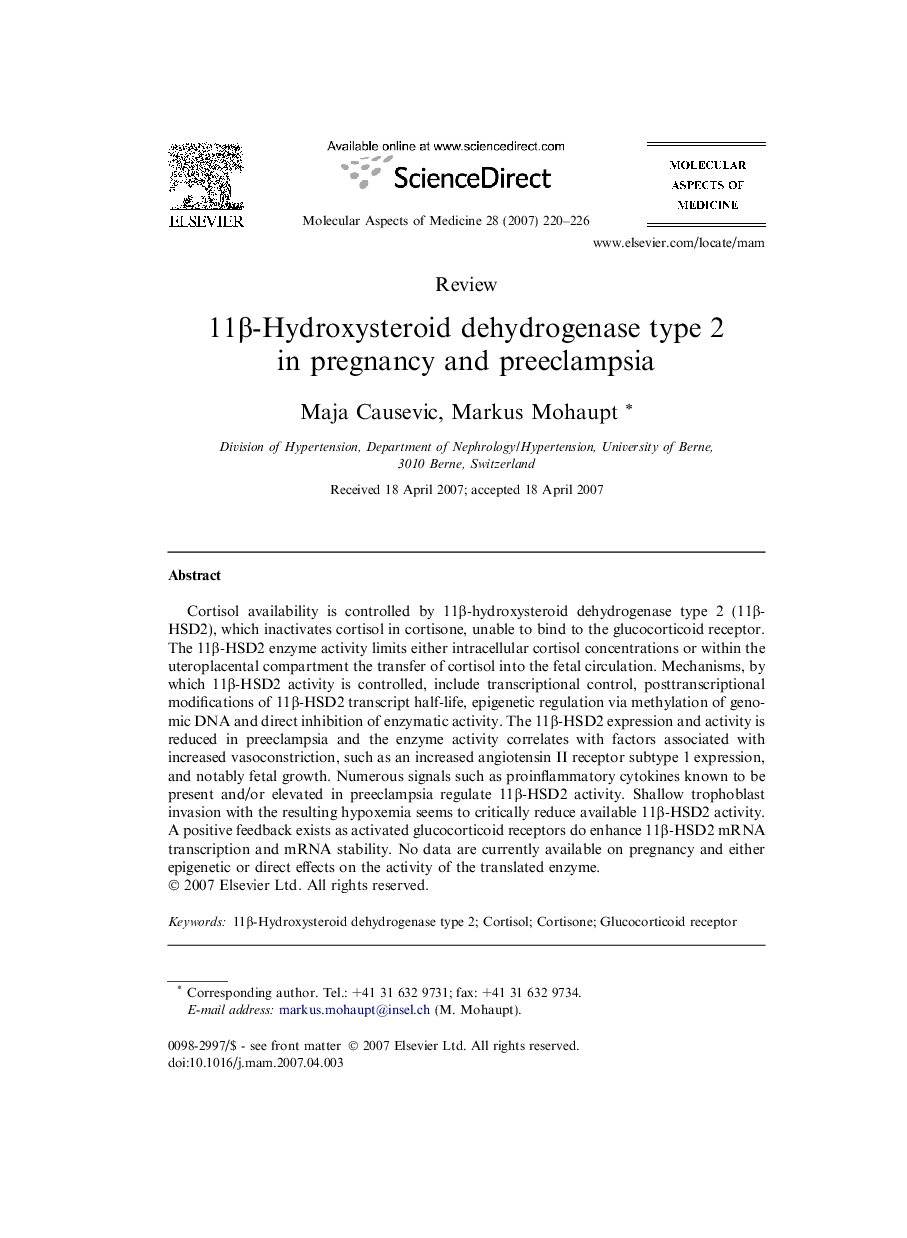| Article ID | Journal | Published Year | Pages | File Type |
|---|---|---|---|---|
| 1995969 | Molecular Aspects of Medicine | 2007 | 7 Pages |
Cortisol availability is controlled by 11β-hydroxysteroid dehydrogenase type 2 (11β-HSD2), which inactivates cortisol in cortisone, unable to bind to the glucocorticoid receptor. The 11β-HSD2 enzyme activity limits either intracellular cortisol concentrations or within the uteroplacental compartment the transfer of cortisol into the fetal circulation. Mechanisms, by which 11β-HSD2 activity is controlled, include transcriptional control, posttranscriptional modifications of 11β-HSD2 transcript half-life, epigenetic regulation via methylation of genomic DNA and direct inhibition of enzymatic activity. The 11β-HSD2 expression and activity is reduced in preeclampsia and the enzyme activity correlates with factors associated with increased vasoconstriction, such as an increased angiotensin II receptor subtype 1 expression, and notably fetal growth. Numerous signals such as proinflammatory cytokines known to be present and/or elevated in preeclampsia regulate 11β-HSD2 activity. Shallow trophoblast invasion with the resulting hypoxemia seems to critically reduce available 11β-HSD2 activity. A positive feedback exists as activated glucocorticoid receptors do enhance 11β-HSD2 mRNA transcription and mRNA stability. No data are currently available on pregnancy and either epigenetic or direct effects on the activity of the translated enzyme.
